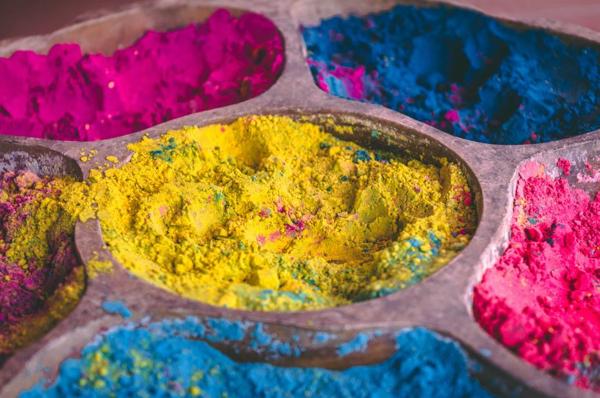Celebrating Holi: The Festival of Colors and Joy
Posted By Admin
Posted On: March 23, 2024

About Holi:
Holi, the vibrant festival celebrated with exuberance and zeal, holds a special place in the hearts of millions around the world. Rooted in Hindu mythology and tradition, Holi transcends boundaries of religion, caste, and creed, bringing people together in a riot of colors and joyous festivities. In this blog, we delve deep into the rich tapestry of Holi, exploring its origins, significance, customs, and the spirit that makes it one of the most beloved festivals globally.
Origins and Historical Significance:
Holi finds its roots in ancient Indian history, with various legends contributing to its narrative. One of the most popular stories revolves around the devout young prince Prahlad and his demoness aunt Holika. Prahlad's unwavering devotion to Lord Vishnu enraged his father, the demon king Hiranyakashipu, who conspired with Holika to end Prahlad's life. However, divine intervention saw Holika perish in the flames while Prahlad emerged unscathed, symbolizing the victory of good over evil. This event is commemorated on the eve of Holi with the tradition of lighting bonfires, known as Holika Dahan.
Another legend associated with Holi is the playful antics of Lord Krishna and Radha. According to folklore, the mischievous Krishna, feeling self-conscious about his dark complexion, playfully applied colors on Radha's fair skin. This lighthearted act initiated the tradition of applying colors during Holi, symbolizing the expression of love, friendship, and unity.
Significance and Traditions:
Holi is not just a festival of colors; it embodies a multitude of emotions and values deeply ingrained in Indian culture. Beyond its joyous facade, Holi signifies the triumph of good over evil, the arrival of spring, and the renewal of relationships.
The festivities commence with Holika Dahan, where communities gather around bonfires to perform rituals, sing hymns, and pray for the destruction of negativity and the prevalence of positivity in their lives. The following day is marked by Rangwali Holi, where streets, parks, and households transform into a kaleidoscope of colors as people douse each other with colored powders and water, irrespective of age, gender, or social status.
Music, dance, and traditional delicacies are integral to Holi celebrations, adding to the festive ambiance. Traditional sweets like gujiya, thandai (a flavored milk drink), and savory snacks are savored amidst laughter and camaraderie. The spirit of Holi transcends barriers, fostering a sense of unity and inclusivity among participants.
Celebrations Around the World:
While Holi originated in India, its allure has transcended geographical boundaries, captivating people from diverse cultures and backgrounds. In countries like Nepal, Bangladesh, Pakistan, and parts of the Indian diaspora, Holi is celebrated with equal fervor and enthusiasm. In recent years, Holi-inspired events and festivities have gained popularity in various Western countries, attracting a multicultural audience eager to partake in the colorful revelry.
Concluded:
Holi, with its kaleidoscope of colors and infectious spirit of joy, embodies the essence of Indian culture and tradition. Beyond its surface revelry, Holi symbolizes the triumph of good over evil, the onset of spring, and the unifying power of love and friendship. As we immerse ourselves in the vibrant festivities of Holi, let us also strive to uphold its values of inclusivity, compassion, and environmental stewardship, ensuring that the festival continues to inspire and unite people across the globe for generations to come.